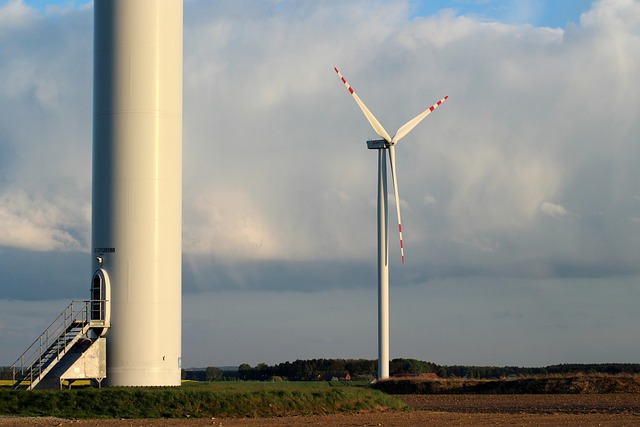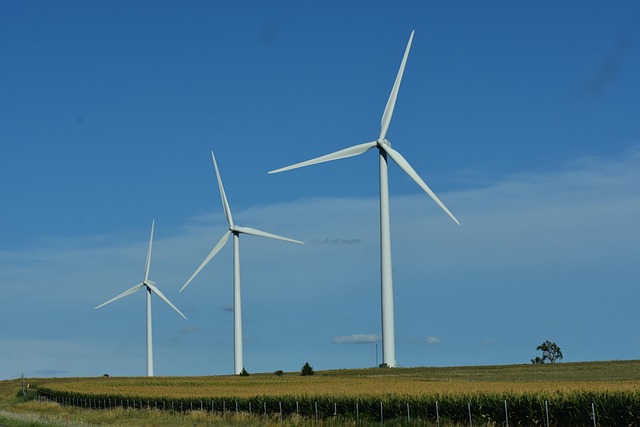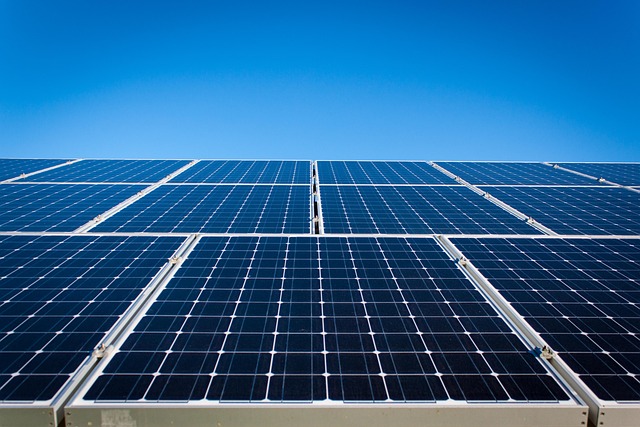The Power of Choice: Embracing Renewable Energy Solutions
In an era where environmental issues dominate global discussions, the concept of renewable energy has emerged as a beacon of hope for a sustainable future. The power of choice in adopting renewable energy solutions is not only crucial for safeguarding the planet but also for enhancing energy security, stimulating economic growth, and improving public health. This article explores the multifaceted benefits of renewable energy, the various types of renewable resources available, and the importance of individual and collective action in embracing these solutions.
Understanding Renewable Energy
Renewable energy is derived from natural sources that are replenished at a rate equal to or faster than they are consumed. Unlike fossil fuels, which take millions of years to form and are finite in supply, renewable energy sources are abundant and sustainable. Common forms of renewable energy include solar, wind, hydroelectric, geothermal, and biomass. Each of these sources has unique characteristics and applications, contributing to a diverse energy portfolio.
Solar Energy
Solar energy is harnessed from the sun’s rays and can be converted into electricity or heat. Photovoltaic (PV) systems are commonly used to capture solar energy and convert it into electricity. Solar panels can be installed on rooftops or in large solar farms, making them adaptable for various settings. The affordability of solar technology has dramatically improved, making it an accessible option for homeowners and businesses alike.
Wind Energy
Wind energy utilizes the kinetic energy of moving air to generate electricity. Wind turbines, which can be found onshore and offshore, convert wind movement into electrical power. Wind energy is one of the fastest-growing renewable sources globally, thanks to its efficiency and decreasing costs. Wind farms can produce large quantities of energy without emitting harmful greenhouse gases, making them an attractive alternative to traditional fossil fuel power generation.
Hydroelectric Energy
Hydroelectric energy is generated from the movement of water, typically through dams on rivers. When water flows through these dams, it turns turbines that generate electricity. Hydropower is a reliable and efficient source of renewable energy, providing a steady output of power. However, it is essential to manage the environmental impact responsibly, as the construction of dams can disrupt local ecosystems and communities.
Geothermal Energy
Geothermal energy taps into the Earth’s internal heat, which can be used for heating or converted into electricity. This renewable source is particularly effective in regions with significant volcanic activity or hot springs. Geothermal plants have a small land footprint and emit very low levels of greenhouse gases. However, their availability is geographically limited, making them less widespread than solar or wind energy.
Biomass Energy
Biomass energy is derived from organic materials, such as plants and animal waste, which can be converted into electricity, heat, or biofuels. This renewable resource helps manage waste while providing energy. Biomass can be a carbon-neutral option, as the carbon dioxide emitted during combustion is offset by the carbon dioxide absorbed by the plants during their growth. Sustainable practices in biomass production are essential to avoid deforestation and maintain ecological balance.
The Benefits of Embracing Renewable Energy
The benefits of renewable energy extend beyond environmental conservation. As nations grapple with climate change and the need for sustainable development, the transition to renewable energy sources offers countless advantages for individuals, communities, and economies.
Environmental Impact
One of the most significant benefits of renewable energy is its potential to reduce greenhouse gas emissions and combat climate change. The burning of fossil fuels is a leading cause of air pollution and global warming. By shifting to clean energy sources, we can lower our carbon footprint, improve air quality, and promote a healthier planet for future generations. Additionally, renewable energy technologies often require less water than fossil fuel extraction and processing, reducing stress on vital water resources.
Energy Independence
Renewable energy provides countries with the opportunity to lessen their reliance on foreign oil and fossil fuels, enhancing energy security. When nations invest in local renewable resources, they can harness their potential to meet domestic energy demands, which reduces vulnerability to global market fluctuations and geopolitical tensions. Energy independence can lead to more stable energy prices and promote local job creation in the renewable energy sector.
Economic Growth and Job Creation
The transition to renewable energy can drive economic growth and job creation. According to various studies, the renewable energy sector has consistently shown higher job creation potential than fossil fuel industries. Jobs in solar and wind installation, maintenance, manufacturing, and research and development are expanding rapidly. As nations invest more in renewable technology, they create a vibrant job market that supports both skilled and unskilled labor.
Public Health Benefits
The health benefits of transitioning to renewable energy cannot be overlooked. Air pollution from fossil fuels is linked to respiratory illnesses, cardiovascular disease, and premature deaths. By reducing reliance on polluting energy sources, we can improve public health outcomes and reduce healthcare costs related to pollution-related illnesses. Transitioning to cleaner energy can lead to healthier communities and a better quality of life for individuals.
The Role of Individuals in the Transition
While large-scale investments in renewable energy infrastructure are essential, individual actions also play a crucial role in the transition to a sustainable energy future. Every choice we make, from household energy consumption to transportation methods, can influence the demand for renewable solutions. Here are some ways individuals can contribute to the renewable energy movement:
Making Informed Energy Choices
Individuals can start by choosing renewable energy providers when available. Many utility companies offer options for green energy plans, allowing consumers to support renewable sources directly. Additionally, homeowners can invest in solar panels or other renewable technologies to reduce their reliance on the grid and save money on energy bills.
Advocacy and Awareness
Being an advocate for renewable energy means raising awareness about the benefits and necessity of sustainable solutions. Individuals can engage with their communities, support local policies favoring renewable energy development, and educate themselves and others about energy conservation and efficiency practices. Every conversation about renewable energy contributes to a broader movement towards a sustainable future.
Reducing Energy Consumption
Reducing energy consumption through efficiency measures is as vital as increasing renewable energy production. Simple actions, such as using energy-efficient appliances, ensuring proper insulation, and adopting sustainable transportation methods like biking or electric vehicles, can significantly lower carbon footprints. When individuals prioritize energy efficiency, it creates a ripple effect, prompting industries to follow suit.
Challenges and Considerations
Despite the numerous advantages of renewable energy, challenges still exist that hinder widespread adoption. Addressing these challenges is critical for successful integration into our energy systems.
Intermittency and Reliability
One of the primary concerns with renewable energy sources, particularly solar and wind, is their intermittency. These resources are not always available; solar energy production depends on sunlight, and wind energy relies on wind speed. To overcome this challenge, energy storage solutions, such as batteries, are being developed to store excess energy for use during periods of low production. Advancements in grid technology also enhance the ability to integrate various energy sources effectively.
Initial Costs
The initial investment in renewable energy infrastructure can be significant, which may deter some individuals and businesses from making the switch. However, it is essential to consider the long-term savings and benefits associated with renewable energy, which often outweigh the initial costs. Government incentives, tax credits, and financing options can help lower the financial barriers to entry and facilitate the transition.
Policy and Regulatory Frameworks
An enabling policy environment is essential for the growth of renewable energy. Government regulations, incentives, and commitments to renewable energy targets play a significant role in catalyzing investment and development. Advocacy for supportive policies at local, regional, and national levels is crucial for creating a landscape where renewable energy can thrive.
The Future of Renewable Energy
Looking ahead, the future of renewable energy is promising. Technological advancements, increased public awareness, and a greater commitment to addressing climate change all point towards a inevitable shift in energy paradigms. As more individuals, businesses, and governments embrace renewable solutions, we move closer to a sustainable energy economy.
Investment in research and development will continue to enhance the efficiency and affordability of renewable technologies. Innovative solutions, such as floating solar panels and offshore wind farms, will diversify energy production methods and expand renewable resource accessibility. As we enhance our efforts toward a circular economy, integrating energy conservation, efficiency, and renewable sources will become critical for environmental, economic, and social resilience.
Conclusion
Embracing renewable energy solutions represents a powerful choice that holds the potential to reshape our world for the better. By reducing greenhouse gas emissions, enhancing energy independence, driving economic growth, and promoting public health, the adoption of renewable resources serves as a crucial step towards sustainability. Every individual, organization, and government has a part to play in this transformative journey. By making informed choices and championing renewable energy initiatives, we can harness the power of choice and pave the way for a brighter, cleaner future.



